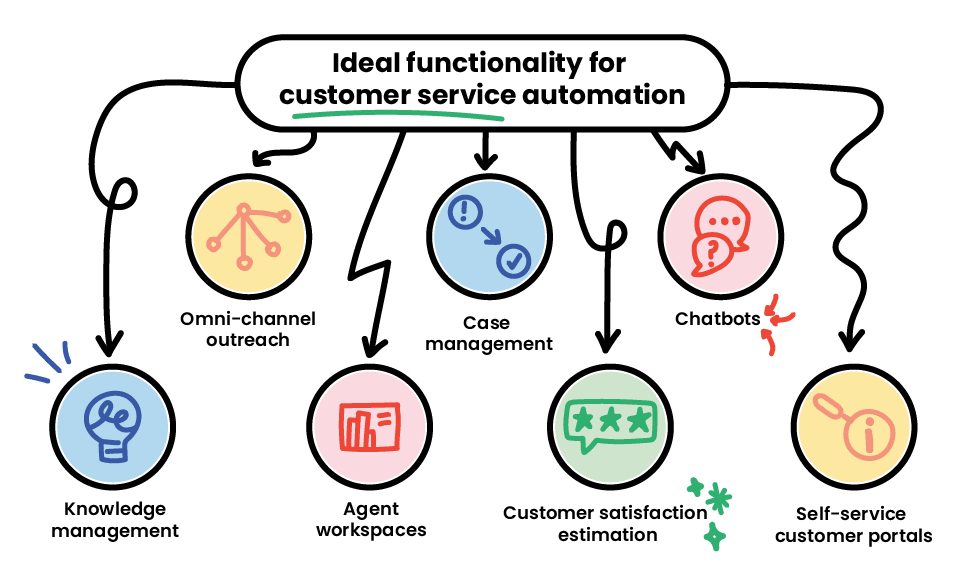Let’s face it, apps are hard. Yes, hard to develop, maintain and support but mostly, hard to learn how to use! There are things in Facebook (or whatever it’s called now) I am still learning, and I have used it since 2009.
So, who do we call when we need to learn how to use an app and learn it quickly (or at least at a certain rate that doesn’t make us hate the app)?
Enter stage left: The Onboarding Team, also known as the Success Team, the Implementation Team – it’s tech, we have a lot of names for the same thing…
No matter the name, this is the team of people who are tasked with ensuring users of the application learn, adapt and optimise it in the most successful way possible for themselves or their business.
It’s no lie that success is defined differently by everyone but designing an ideal onboarding style means that a user understands the intricacies of the application and are then able to shape their success points around that.
But wait, isn’t this a blog about service portals? Then why in the world am I talking about onboarding?!
It’s as simple as this: the better the onboarding, the less friction with the application, the lower the churn rate which means a higher MRR (monthly recurring revenue). Essentially, better onboarding = more dollar dollar bills y’all (cha-ching!)
And, of course, happy customers (which is the most important thing).
Where the cross-over between onboarding and service portals comes into play is that most service portals have built-in features that structure the onboarding process, such as introductory walk-throughs and tutorials. If not, they might then choose to facilitate user onboarding through service agents and engagement analytics.
Similarly, to the point I made in my last article (a great read if you ask me --> The Top Analytics Tools of 2021 for Web and Mobile Applications) there are so many customer service platforms out there, it can be a bit tricky finding the right fit for you.
So, Goldilocks, which is your “just right”?
Each customer service portal has its own set of features and functionality that helps service agents (another name for that brilliant customer success team) solve problems quicker! So, if we think about this from a problem point of view for a moment, different applications are going to have different problems, or customer friction points (which sounds a lot nicer).
Sure, there are always going to be the “lost my password”, and “can’t log in” friction points, so pretty much all customer service portals will have fixes for these common issues as part of their feature set. This just means service agents can work on smoothing out those application-specific friction areas using the tools they have.
I need to point out – friction points in any platform are natural; take them as learning opportunities.
Ok, enough ramble – let’s get into it.
There are 3 non-negotiables I aim to tick off when choosing a service platform:
- Agent side vs User side
- Automation
- Non-Intrusiveness
Agent side vs User side
When choosing a service portal is it crucial to consider how it looks and feels for the service agents compared to how it can be used by application users. This might seem like a redundant matter, but I can guarantee that there are times when the users of the application have a much more pleasant experience submitting a request for help, whereas the service agents are trying to navigate a piece of software that was built in the 90s!
Yes, the service agent side will look a little more chaotic compared to the user side, because they have a lot more information to process, but it does need to be utilised most efficiently.
To ensure that you choose something that will allow for this efficiency, during a demonstration of the software ask to see the platform’s mechanisms for support (or ticket) prioritisation. This will give you an idea of whether or not the platform’s product design team have accounted for the potentially chaotic nature that answering support calls can be. And if they don’t have a way of prioritising issues that arise…don’t go with them.
Automation
Imagine this, you are at your desk at work (your work from work desk, not your work from home desk) and someone asks you a question, you answer it and go back to what you were doing with minimal interruption. Now imagine 10 or more people are vying for your attention all at once with issues that need to be solved – that’s a LOT to be dealing with and more often than not, not productive for anyone.
What if you could prioritise your response order based on an automated triaging system??
In good quality customer service portals, the built-in automation will aim to push the customer to seek help from the self-service space (aka a service agent’s best friend). And not just push the customer there on a whim, will actively aim to push them to a space where their issue can be solved with the existing content in their knowledge base (pretty much a brain dump of all of the complexities in a system).
Think back to the “lost my password” friction point I mentioned earlier – if you were a service agent and got asked that 50 times an hour, would you want to bang your head on the table? I sure would… So, we automate!
Automations allow us to clear out the noise, allow people to find the answers they need, and seek more complex help from you, the brilliant service agent.
Non-Intrusiveness
Some customer service platforms are quite intrusive to the user. What I mean here is that the platform tries really hard to solve the problem for the user before it happens.
For example, you are in a new application, and it uses tooltips (the little highlights that dart over the page, intending to orient you) but these tooltips are either:
- Heavily contrasted to the application’s User Interface (UI); it’s important to highlight these pop-ups, but not outright blind or disorient the user with opposing colour palettes.
- Too sporadic; therefore, they direct you from one corner to another and then another (talk about a head spin!), or
- Too fast; if you see text on the tooltip, but only read half on each tile then that’s not helpful.
To combat this in your service platform choice, pay close attention to the demonstration of the product, and if you are still sceptical about it, ask to see what the experience is for a new user on the application where the service platform has been implemented.
It all comes back to that onboarding experience; the smoother the better.
Let’s discuss some examples
1. Deskpro
This help desk platform focuses on allowing application providers to curate a positive user experience. In doing so, they are able to be industry neutral which is great as their product is always evolving.
They are what we would define as an omnichannel service platform. This means that they can pull in issues from a variety of channels. Examples of different channels might be:
- Live Chat
- Phone Call
One of the best features of Deskpro is its searchable knowledge base. I mentioned knowledge bases briefly before, but let’s go into a little more detail here.
There is a lot of work that goes into the building and implementing of an application, which is all documented. A substantial portion of that documentation is very useful to your users. Having this documentation housed in your customer service platform, and making that searchable for your users, will reduce the volume of easily-remedied complaints and the inefficiency of responding to them individually.
Deskpro is great for high volume applications; lots of users, lots of questions and streamlining solutions.
2. HubSpot
It might seem strange that I am using HubSpot as an example here because it’s pretty niche, but with a lot of professional services moving to remote exclusively as a way of working I thought it might be good to highlight.
Similarly to Deskpro, HubSpot is an omnichannel platform. Where this is really important for high-touch, low-volume service companies is in the user (or customer) journey. Ideally, we want to be able to track when a potential customer interacts for the first time with our company’s online presence and then continue that tracking all the way through to the point where they become a customer.
But why does this matter for customer service issues? Well, when we are dealing with high-touch, low-volume, the likely issues arise not so much in the application, but rather in the process. Therefore, we need to be able to escalate, report findings and attach necessary information to the customer's file. So, when is it all in the one space (like HubSpot) this make it all so much easier.
3. Intercom
A conversation styled service platform - this is my pick, every time.
Intercom is definitely on the more expensive end of the spectrum, but its capabilities are 100% worth it for high-volume businesses. I used Intercom when I was the only service agent for over 3000 active users, 100 of which would be online over the course of the day. So, for me, it was a lifesaver.
Some of the reasons I love Intercom: it integrates with your CRM (Customer Relationship Management software), your engineering teams’ portal (eg. Jira) and can proactively help manage onboarding, issue responses, plus has a searchable knowledge base!
It ticks all the boxes! Except for the budget box but... if you are looking for pure quality, you should still go for it!
Key Takeaways
- Don’t underestimate the customer onboarding experience and its role in ensuring successful uptake and use of the product.
- Consider your customer friction points – what are they and how are they best resolved? If you will need a lot of in-depth, one-on-one service to resolve the issues, factor that into your decision.
- Ensure the platform you choose is user-friendly for both the customer and the customer service agents who will be using it. That means in terms of the User Interface (UI) and also the functionality.
- And finally, consider how much automation you may be able to leverage. Pushing easily-resolved queries to your existing knowledge base will free up a lot of time and reduce strain on your team.
While we have discussed only three examples above, these platforms are a great starting point in your journey to finding your “just right”.
I hope this article has given you the foundation of knowledge you need to go out there and critically analyse each of the options on the market. At the end of the day, the platform you choose needs to fit your budget, application technology but most of all, your users and service agents.






